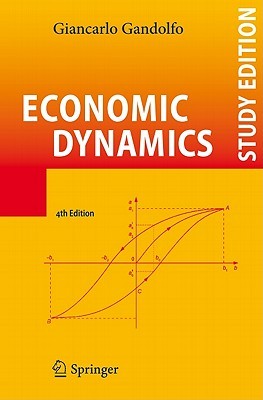
- We will send in 10–14 business days.
- Author: Giancarlo Gandolfo
- Publisher: Springer
- Year: 2010
- Pages: 829
- ISBN-10: 364213503X
- ISBN-13: 9783642135033
- Format: 15.8 x 23.4 x 4.6 cm, minkšti viršeliai
- Language: English
- SAVE -10% with code: EXTRA
Reviews
Description
This is the fourth edition of a book that, after circulating in the form of l- ture notes at the universities of Rome (now La Sapienza University of Rome) and Siena in the late 1960s, was originally published in 1971 under the titleMat- maticalMethodsandModelsinEconomicDynamics. Inthosefortyoddyearstwo main developments have occurred in economic dynamics. The ?rst is the much greater amount of advanced mathematics that is being used today with respect to the past. The second is the increasing importance of non-linear modelling as contrastedwiththelinearapproach(which, however, hasnotgoneoutoffashion). This fourth edition re?ects both developments. It contains additional advanced mathematical tools, and a larger amount of non-linear mathematics and appli- tions. These developments are re?ected especially in Part III, that now accounts forwellover50%ofthebook. ItgoeswithoutsayingthatIhavemadeeverye?ort topreservetheuser-friendlyfeatureofthepreviouseditions: thespiritofthebook hasremainedthesame, namelytogiveacomprehensive, butsimple, treatmentof the mathematical methods commonly used in dynamical economics, and to show how they are applied to build and analyse economic models. Accordingly, the focus is on methods, and every mathematical technique - troduced is followed by its application to selected economic models that serve as examples. Theunifyingprincipleintheexpositionofthedi?erenteconomicm- els is then seen to be the common mathematical technique. This process will enable the readers not only to understand the basic literature, but also to build and analyse their own model
EXTRA 10 % discount with code: EXTRA
The promotion ends in 22d.01:12:05
The discount code is valid when purchasing from 10 €. Discounts do not stack.
- Author: Giancarlo Gandolfo
- Publisher: Springer
- Year: 2010
- Pages: 829
- ISBN-10: 364213503X
- ISBN-13: 9783642135033
- Format: 15.8 x 23.4 x 4.6 cm, minkšti viršeliai
- Language: English English
This is the fourth edition of a book that, after circulating in the form of l- ture notes at the universities of Rome (now La Sapienza University of Rome) and Siena in the late 1960s, was originally published in 1971 under the titleMat- maticalMethodsandModelsinEconomicDynamics. Inthosefortyoddyearstwo main developments have occurred in economic dynamics. The ?rst is the much greater amount of advanced mathematics that is being used today with respect to the past. The second is the increasing importance of non-linear modelling as contrastedwiththelinearapproach(which, however, hasnotgoneoutoffashion). This fourth edition re?ects both developments. It contains additional advanced mathematical tools, and a larger amount of non-linear mathematics and appli- tions. These developments are re?ected especially in Part III, that now accounts forwellover50%ofthebook. ItgoeswithoutsayingthatIhavemadeeverye?ort topreservetheuser-friendlyfeatureofthepreviouseditions: thespiritofthebook hasremainedthesame, namelytogiveacomprehensive, butsimple, treatmentof the mathematical methods commonly used in dynamical economics, and to show how they are applied to build and analyse economic models. Accordingly, the focus is on methods, and every mathematical technique - troduced is followed by its application to selected economic models that serve as examples. Theunifyingprincipleintheexpositionofthedi?erenteconomicm- els is then seen to be the common mathematical technique. This process will enable the readers not only to understand the basic literature, but also to build and analyse their own model


Reviews